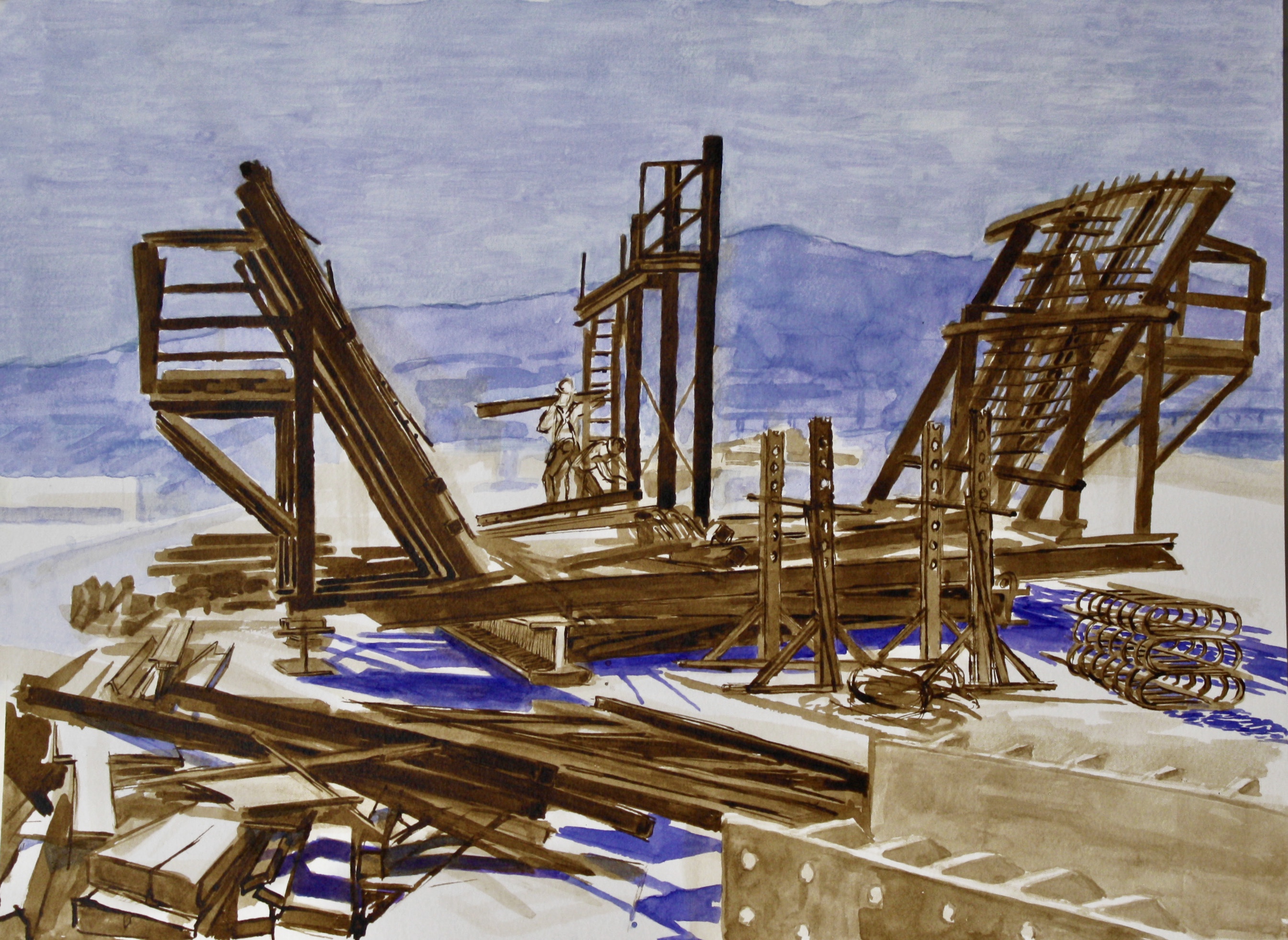Excerpts from my Journal: Part 5.
In drawing and painting the bridge, so many associations from history creep in. Technology really does build upon itself. As one engineer pointed out, the laws of physics do not change.
So, I look under the bridge and see the Tower of Babel. The top calls to mind old sailing ships, particularly as the center of the bridge is still detached from the ramps. It is already a glorious structure, dwarfing the old bridge, which looks pedestrian in comparison.
When finished, the bridge will be suspended on huge cables from two main towers stretching 500 feet in the sky. The supporting pylons go 180 feet underground. To make it as earthquake-proof as possible, the roadway in the center of the bridge is suspended from the towers and rests, unattached, above huge supporting pillars.
The cement sections of the bridge have holes that run through them. Cables are inserted in the holes and pulled taut, stretching the cement! Who would have imagined that cement could be tightened in this way!
They are apparently using the largest piece of scaffolding in the world to form this bridge. When they are finished, it will be scrapped so that no other bridge can be identical. All the parts are made in China and the design by Italians and Spaniards.

I love the cranes. They tower above everything else. No matter how tall a structure is, the cranes must be taller. They point into the sky, pencil thin and lacey. They pivot, they balance, they bend forward at knobby joints. They hook up both men and materials, swing them through the air and land them safely—on a platform that projects out in the air itself. The very tallest and straightest are the yellow cranes attached to the two main masts of the bridge. The crane operator takes an elevator (which is also attached to the outside of the main mast) halfway up. Then he walks out on an arm which reaches from the bridge to the crane out in the middle of all that air, and walks up a set of stairs inside the crane to the top. The crane, however, is not made of solid sides, but open rails. Just thinking about being that high up, with so little between oneself and empty space, makes my stomach flutter and my armpits tingle.
The east crane looks slightly bent, as though the incessant winds of the harbor have begun to push it over.

The bridge moves. It must, in order to withstand earthquakes. It will carry thousands of cars and trucks, all day and night, and it will be bouncing up and down, continuously. When one of the giant forklifts trundles up the ramp it is very noticeable. Those in moving vehicles will not feel it. There is a paradox in here somewhere, a structure so massive and solid, and anchored to the earth, constantly moving.
